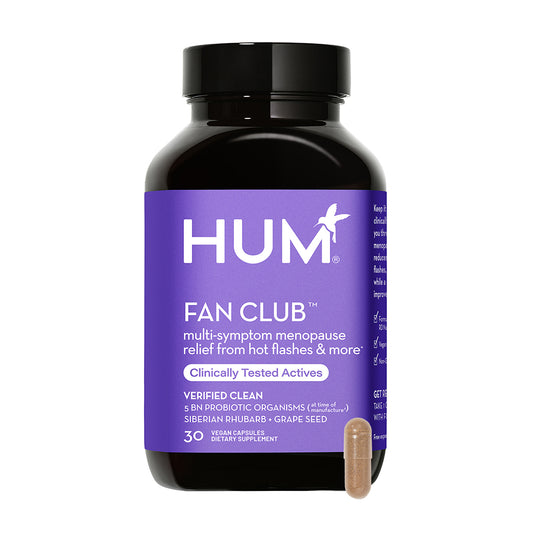Walking is one of the easiest and most accessible ways to get healthier. It’s a gentle form of exercise that most people can do, no matter their age or how fit they are. Let’s talk about how great walking is! Regular walking can help:
- Promote joint flexibility.
- Strengthen muscles.
- Control your weight.
- Lower the risk of chronic conditions such as heart disease and diabetes.
- Improve bone density.
- Boost mood and cognitive function.
- Provide an opportunity for connection, reflection, and creativity.
So, how do all these benefits relate to menopause? Let’s dive in.
The benefits of walking during menopause
Walking can positively impact people who are going through menopause. Here’s how.
Joint and muscle health
Estrogen may help keep muscles strong. Scientists have learned from studying animals that estrogen may act within the muscles to help maintain muscle mass and decrease the breakdown of muscle. Joint aches and pains are a commonly reported symptom during menopause.
It’s unclear if this is due to fluctuating levels of estrogen or another cause. But in one large study, those who started the study with joint pain or stiffness had more relief after using menopausal hormone therapy. As a low-impact form of exercise, walking is a great way to exercise and keep your muscles strong, even with all the changes that can come with menopause.
Weight management
During the menopausal transition, many people feel like they have gained weight. While this has not been confirmed in any research studies, understanding the changes happening in your body that could lead to weight gain is important.
As estrogen levels drop, there’s a natural decline in the size and number of muscle fibers in your body, causing your muscle mass to decline. Less muscle mass can lead to a slower metabolism, which can ultimately lead to some weight gain. Regular walking can help you burn calories and maintain a healthy weight.

Heart health
The risk of heart disease increases after menopause, and this may be in part due to the lower levels of estrogen. Walking regularly can help keep your heart healthy. It may lower your blood pressure, which is how hard your blood pushes against the walls of your arteries. It can also lower your LDL cholesterol, which is the "bad" cholesterol that can build up in your arteries and cause problems.
Walking can also increase your HDL cholesterol, which is the "good" cholesterol that helps clean your arteries. Walking can also make your heart muscle stronger and help it pump blood better to your lungs and the rest of your body.
Bone health
A decrease in bone density is another common challenge as you age and especially after menopause. Estrogen helps prevent the natural breakdown of bone. Lower bone density can lead to osteoporosis, a condition that puts you at a higher risk of breaking a bone.
Doing weight-bearing exercises, like walking and lifting weights, can make your bones stronger and healthier. When you expose your bones (and your body) to exercising and lifting increased weights, your body responds by making more bone tissue and breaking down less bone tissue.
Mood and focus
Feeling cranky or sad and having trouble concentrating are also normal as you go through menopause. But being active can help fight moodiness. Regular walking can promote the release of endorphins, or hormones in your body that act as natural mood lifters, leading to reduced stress levels and improved mental well-being.
Social connection
Walking can be a social activity, providing an opportunity for people to connect with friends, family, or fellow walkers. Social interactions play a vital role in maintaining mental and emotional well-being during menopause.
How to safely incorporate more walking into your routine
To reap the maximum benefits, it's essential to incorporate walking into your daily routine. If you’re just starting out, take it slow — maybe 10 minutes a day — and gradually increase the amount of time you spend walking each day or week. Aim to get up to at least 150 minutes of moderate-intensity aerobic activity per week, as recommended by health authorities. Talk to your doctor if you have any questions or concerns about starting a daily or weekly routine.

To stay committed and safe while walking, think about the following:
- Create a routine and keep track of how much you walk each day. Establishing a regular walking routine — a daily morning walk, a lunch time power walk, an evening stroll, or some combination of all three — can help keep you accountable. Consistency is key to experiencing long-term benefits. Make sure you have a plan for all types of weather.
- Find a walking buddy and use your time together to catch up and stay motived. Social support can enhance your commitment to regular exercise.
- Choose safe and well-lit routes so you feel comfortable where you’re walking and can increase your visibility to others. Be careful of ice or anything else that may increase your risk of falling.
- Invest in comfortable shoes as a key ingredient for walking. Make sure you find walking shoes that are supportive so you can reduce the risk of injury.
- Stay hydrated by drinking plenty of water before, during, and after your walks.
Add some fun to your walk
As with any exercise, adding some fun to the experience can make taking a walk even more joyful and energizing. Think about this:
- See the beauty by choosing scenic and interesting walking routes to keep your mind engaged while you walk.
- Mix it up by varying your walking routine by exploring different routes or incorporating intervals of brisk walking. This can add excitement to your routine and provide additional cardiovascular benefits.
- Plug in and listen to music, podcasts, or audiobooks to make your walk more entertaining.
- Join a walking group or club and use your walks to meet new people.
- Treat yourself after each walk to something you enjoy, such as a relaxing bath.
Walking is a powerful tool that can help you manage some of the challenges that menopause throws your way. So, lace up your sneakers, pump up the jams, find a safe spot, and get moving. Your body and mind will thank you for it.
References
American Psychological Association. (2020). Working out boosts brain health. Accessed 2/9/24 from https://www.apa.org/topics/exercise-fitness/stress
An, N. & Chuo, J. (2022). Walking and activeness: The first step toward the prevention of strokes and mental illness. Computational Intelligence and Neuroscience: 3440437., PMCID: PMC8938141 doi: 10.1155/2022/3440437
Arthritis Foundation. 12 benefits of walking. Accessed 2/9/24 from https://www.arthritis.org/health-wellness/healthy-living/physical-activity/walking/12-benefits-of-walking
Barnabei, V.M., Cochrane, B.B., Aragaki, A.K., Nygaard, I., Williams, R.S., McGovern, P.G., Young, R.L., Wells, E.C., O’Sullivan, M.J., Chen, B., Schenken, R., & Johnson, S.R. (2005). Menopausal symptoms and treatment-related effects of estrogen and progestin in the Women's Health Initiative. Obstetrics & Gynecology, 105(5 Pt 1): 1063-1073. doi:10.1097/01.AOG.0000158120.47542.18
Casper, R.F. (2023). Clinical manifestations and diagnosis of menopause. UpToDate. Accessed 2/20/24 from https://www.uptodate.com/contents/clinical-manifestations-and-diagnosis-of-menopause
Chidi-Ogbolu, N. & Barr, K. (2019). Effect of estrogen on musculoskeletal performance and injury risk. Frontiers in Physiology, 9: 1834. https://doi.org/10.3389/fphys.2018.01834
Chlebowski, R.T., Cirillo, D.J., Eaton, C.B., Stefanick, M.L., Pettinger, M., Carbone, L.D., Johnson, K.C., Simon, M.S., Woods, N.F., & Wactawski-Wende, J. (2013). Estrogen alone and joint symptoms in the Women's Health Initiative randomized trial. Menopause, 20(6): 600-608. doi:10.1097/GME.0b013e31828392c4
Centers for Disease Control and Prevention. (2023). How does social connectedness affect health?. Accessed 2/9/24 from https://www.cdc.gov/emotional-wellbeing/social-connectedness/affect-health.htm#
Collins, B.C., Laakkonen, E.K., & Lowe, D.A. (2019). Aging of the musculoskeletal system: How the loss of estrogen impacts muscle strength. Bone, 123: 137-144. doi: 10.1016/j.bone.2019.03.033
El Khoudary, S.R., Zhao, Q., Venugopal, V., Manson, J.E., Brooks, M.M., Santoro, N., Black, D.M., Mitchell Harman, S., Cedars, M.I., Hopkins, P.N., Kearns, A.E., Miller, V. M., Taylor, H.S., & Budoff, M.J. (2019). Effects of hormone therapy on heart fat and coronary artery calcification progression: Secondary analysis from the KEEPS trial. Journal of the American Heart Association, 8(15): e012763. https://doi.org/10.1161/JAHA.119.012763
Martinez-Puig, D., Costa-Larrion, E., Rubio-Rodriguez, N., & Galvez-Martin, P. (2023). Collagen supplementation for joint health: The link between composition and scientific knowledge. Nutrients, 15(6): 1332. doi: 10.3390/nu15061332
National Heart, Lung, and Blood Institute. (2022). Physical activity and your heart: Benefits. Accessed 2/9/24 from https://www.nhlbi.nih.gov/health/heart/physical-activity/benefits
National Institute of Arthritis and Musculoskeletal and Skin Diseases. (2023). Exercise for your bone health. Accessed 2/9/24 from https://www.niams.nih.gov/health-topics/exercise-your-bone-health
Rosen, H., & Lewiecki, E.M. (2024). Overview of the management of low bone mass and osteoporosis in postmenopausal women. UpToDate. Accessed 02/20/24 from https://www.uptodate.com/contents/overview-of-the-management-of-low-bone-mass-and-osteoporosis-in-postmenopausal-women
Sternfeld, B., Wang, H., Quesenberry, C.P. Jr., Abrams, B., Everson-Rose, S.A., Greendale, G.A., Matthews, K.A., Torrens, J.I., & Sowers, M. (2004). Physical activity and changes in weight and waist circumference in midlife women: findings from the Study of Women's Health Across the Nation. American Journal of Epidemiology, 160(9): 912-922. doi:10.1093/aje/kwh299
U.S. Department of Health and Human Services. (2018). Physical activity guidelines for Americans, 2nd edition. Accessed 2/9/24 from https://health.gov/sites/default/files/2019-09/Physical_Activity_Guidelines_2nd_edition.pdf
Links to other parties' articles and websites are provided for convenience only. Kenvue is not responsible for their content.








